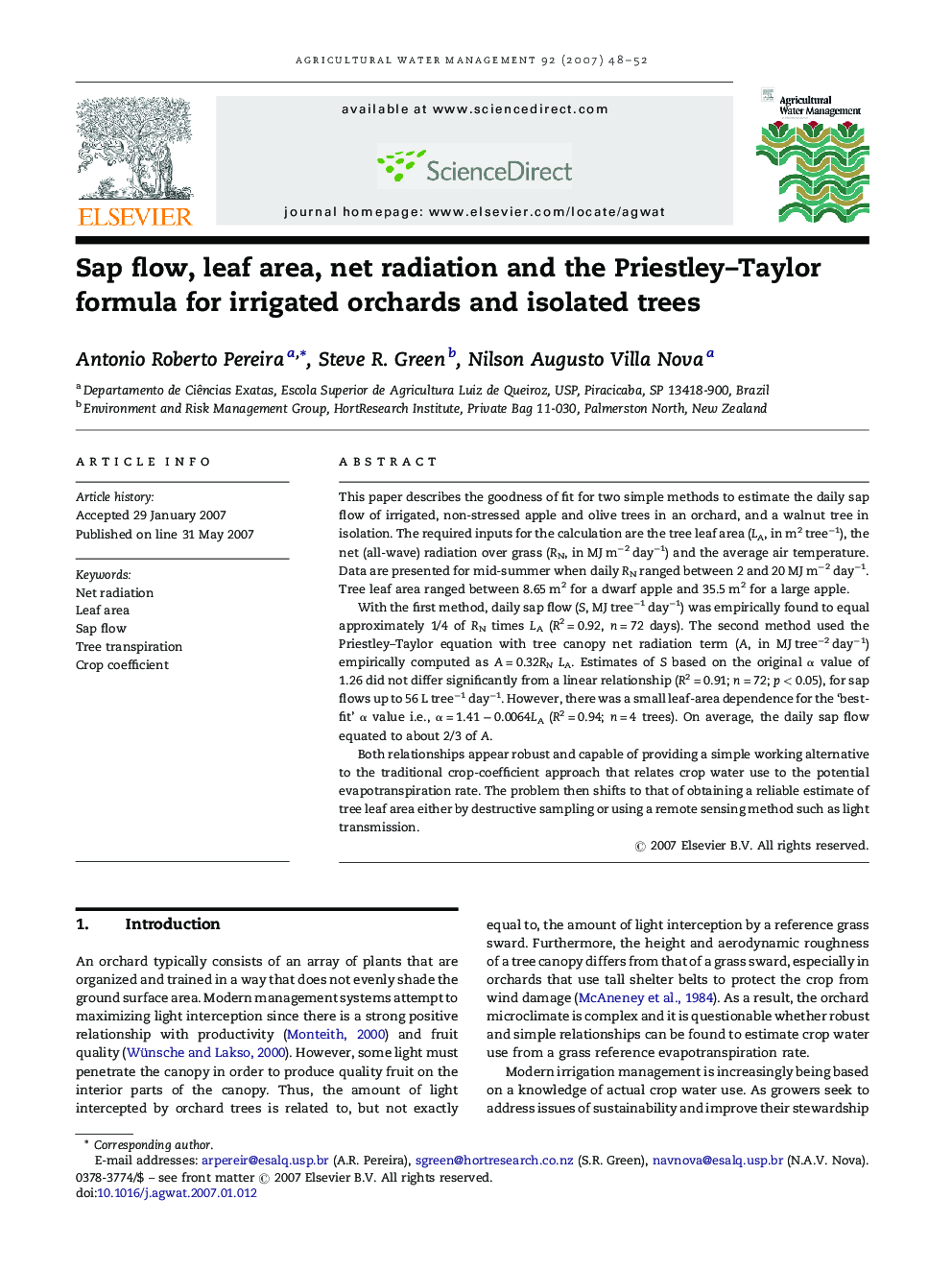| Article ID | Journal | Published Year | Pages | File Type |
|---|---|---|---|---|
| 4480360 | Agricultural Water Management | 2007 | 5 Pages |
This paper describes the goodness of fit for two simple methods to estimate the daily sap flow of irrigated, non-stressed apple and olive trees in an orchard, and a walnut tree in isolation. The required inputs for the calculation are the tree leaf area (LA, in m2 tree−1), the net (all-wave) radiation over grass (RN, in MJ m−2 day−1) and the average air temperature. Data are presented for mid-summer when daily RN ranged between 2 and 20 MJ m−2 day−1. Tree leaf area ranged between 8.65 m2 for a dwarf apple and 35.5 m2 for a large apple.With the first method, daily sap flow (S, MJ tree−1 day−1) was empirically found to equal approximately 1/4 of RN times LA (R2 = 0.92, n = 72 days). The second method used the Priestley–Taylor equation with tree canopy net radiation term (A, in MJ tree−2 day−1) empirically computed as A = 0.32RNLA. Estimates of S based on the original α value of 1.26 did not differ significantly from a linear relationship (R2 = 0.91; n = 72; p < 0.05), for sap flows up to 56 L tree−1 day−1. However, there was a small leaf-area dependence for the ‘best-fit’ α value i.e., α = 1.41 − 0.0064LA (R2 = 0.94; n = 4 trees). On average, the daily sap flow equated to about 2/3 of A.Both relationships appear robust and capable of providing a simple working alternative to the traditional crop-coefficient approach that relates crop water use to the potential evapotranspiration rate. The problem then shifts to that of obtaining a reliable estimate of tree leaf area either by destructive sampling or using a remote sensing method such as light transmission.
